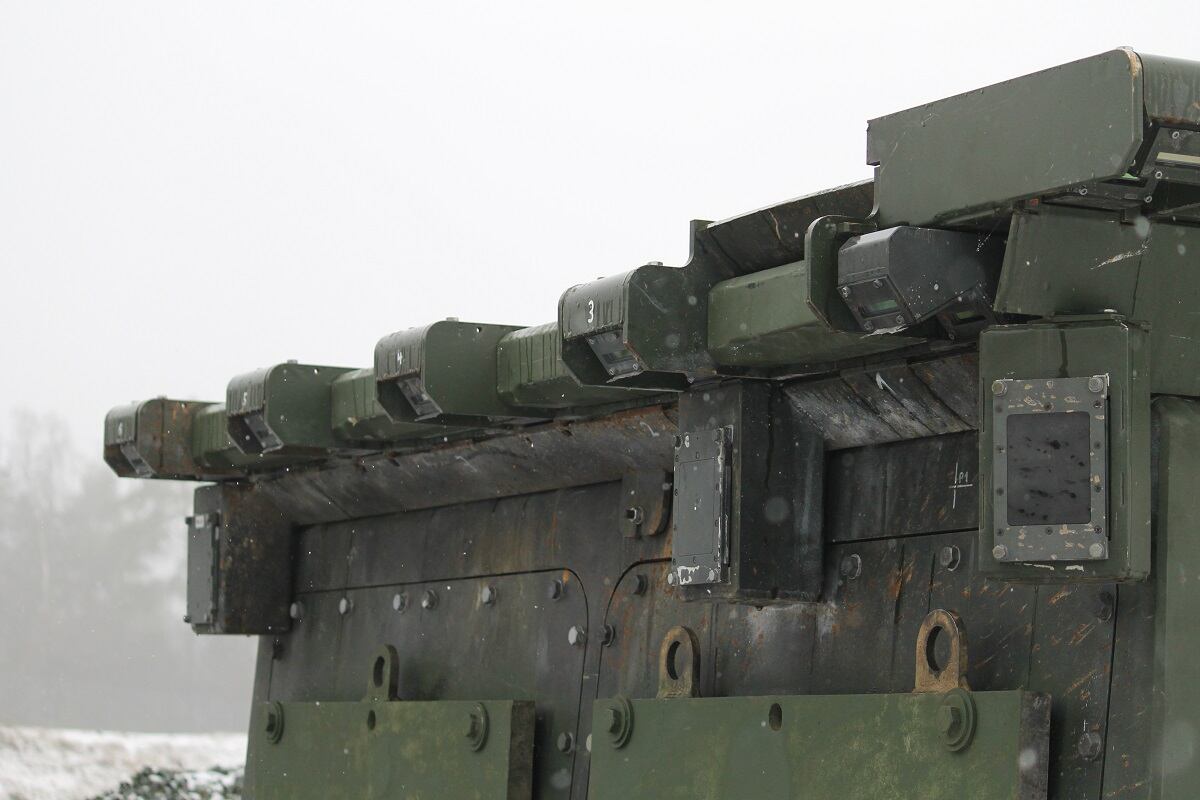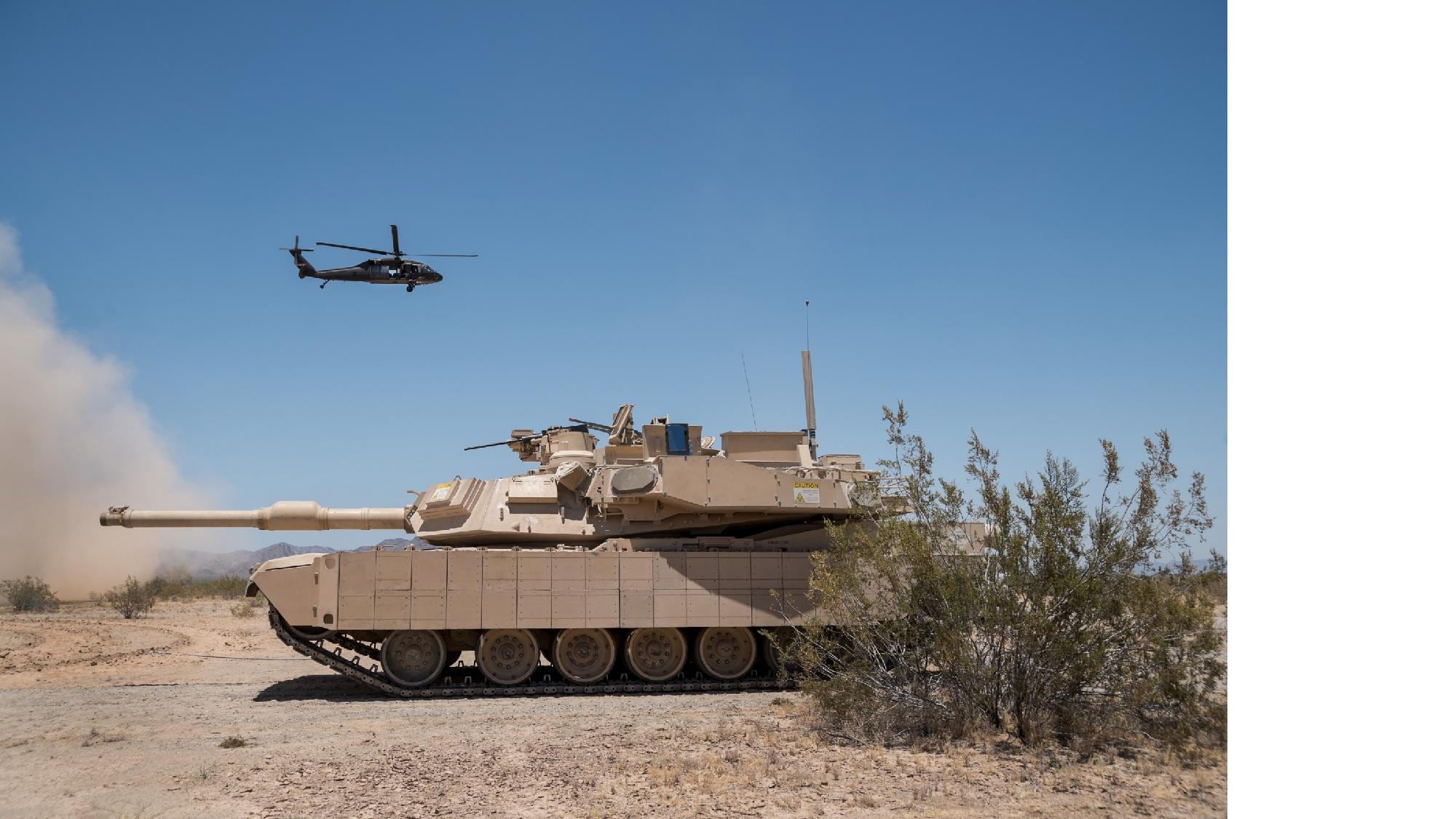WASHINGTON — Congress wants to know why the U.S. Army hasn’t been able to find an appropriate active protection system for the Stryker combat vehicle — even if that solution is something hybrid in nature.
Both the House and Senate have asked for reports on what is happening with the effort to protect a critical asset, particularly in Europe, from anti-tank-guided missiles and rockets.
In the Senate Armed Services Committee’s version of the draft defense policy bill filed June 12, lawmakers are requiring the service submit a report by the beginning of October on its efforts to assess possible active protection systems, or APS, for integration onto the Stryker.
The report should include the effectiveness of the systems tested last fall. Those systems were Rheinmetall’s Active Defense System and Rafael’s Trophy VPS system, a lighter version of the APS equipped on a number of M1 Abrams tanks.
The Army should also include plans for future testing, proposals for future development and a timeline for fielding an APS on a Stryker, the report states.
Defense News reported last week that the Army wouldn’t move forward with either Rheinmetall’s ADS or Rafael’s Trophy VPS due to limitations and challenges associated with Stryker as a platform. But the service said it will continue evaluating those two systems for other vehicles and that — through further testing — technology associated with those systems could prove appropriate for Stryker.
RELATED

The Army is equipping Abrams tanks with the Trophy and has decided to outfit the Bradley Infantry Fighting Vehicle with Israeli company IMI’s Iron Fist APS.
The service evaluated Herndon, Virginia-based Artis LLC’s Iron Curtain APS for the Stryker, but decided in August 2018 that it would not move forward with the integration. Because of the decision, the Army decided to hold a demonstration in November to evaluate both Rheinmetall’s ADS and Rafael’s Trophy VPS, which was demonstrated on a Bradley in Israel earlier in 2018.
Signals that the Army was struggling to find the right system for Stryker came in April, when Lt. Gen. Paul Ostrowksi, the military deputy to the Army’s acquisition chief, testified before that SASC’s Airland Subcommittee that it would take another year to make a decision on an APS for the Stryker following the demonstration.
“It’s going to take about a year, quite frankly, in order to put those systems on the vehicles, characterize them and make a determination as to whether or not to move forward with either one of the two vendors,” he told lawmakers.
According to the Stryker project manager, Col. Glenn Dean, the Army could consider solutions to protect the vehicle that aren’t a sole off-the-shelf system. He added that the service is looking into a number of options.
House Armed Services Committee members want the Army to look at “hybrid” solutions that would not only incorporate an APS, but would also include passive protection technologies “such as improved armor,” according to its version of the defense authorization bill, released earlier this month.
RELATED

The committee wants a report by Nov. 29 that lays out the Army’s requirements and acquisition strategy for near-term and long-term APS efforts to include technology, schedule and funding requirements on combat and tactical vehicles.
The report asks for specifics on Stryker APS testing to date and “an analysis of the relative merits of hybrid protection technologies.”
According to several industry and Capitol Hill sources, it’s of particular interest to Congress how the $25 million appropriated in 2018 for the nondevelopmental testing of an additional APS system for Stryker was spent, in addition to a full report on the test results.
Jen Judson is an award-winning journalist covering land warfare for Defense News. She has also worked for Politico and Inside Defense. She holds a Master of Science degree in journalism from Boston University and a Bachelor of Arts degree from Kenyon College.








